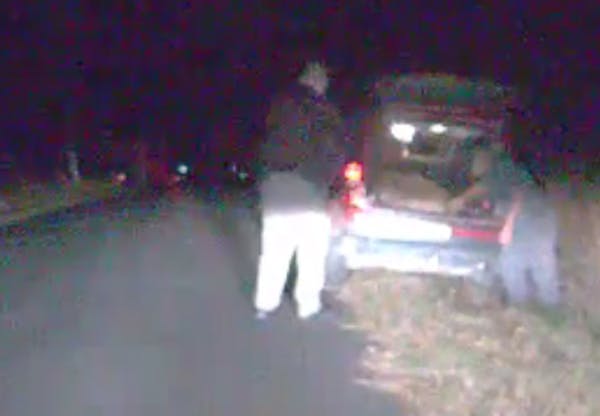Two whitetail bucks recently killed by hunters in southeastern Minnesota have been found to have chronic wasting disease, a brain disease that is fatal to deer, elk and moose.
The discovery likely will trigger a special hunting season and permits for landowners to kill deer in an effort to stem the spread of the disease, said Lou Cornicelli, DNR wildlife research manager. Using sharpshooters to help cull whitetail herds would be a last resort, he said.
Whether that will affect many hunters depends on the size of the disease-management zone to be established. That won't be known until test results come in on more test samples collected during the opening three days of the second firearms season, which ran Nov. 19 to 21. The third firearms season ends Sunday.
The two deer were the only ones to test positive from 2,493 samples gathered by the state Nov. 5 to 13. It's unknown how the deer contracted the disease.
"I'm always worried we're going to find more," Cornicelli said. "The bigger the zone gets, the more difficult it is to manage and the higher the likelihood that the disease gets established."
But Cornicelli is hoping the infection is restricted to a small area because the infected deer killed earlier in November were within a mile of one another near Lanesboro, Minn., in Fillmore County. If that's the case, it means Minnesota may be able to curb the disease rather than "just having to live with it," Cornicelli said, noting the deer population in that part of the state even if culled is resilient and will bounce back quickly.
"Early detection and an aggressive response may mean that future generations don't look back and say, 'You guys screwed up. Why didn't you do something?' " he said. "Once [the disease] is established, there's absolutely no way to get rid of it."
Reducing the deer population is never popular, Cornicelli said. Deer hunting is an annual tradition for many families and an economic boost for businesses, he said.
"But the hope is that we won't have to live with this thing forever."
CWD has been found in about two dozen states. Except for Minnesota and New York, the disease is so widespread in most of those states that there's little hope of eliminating it, Cornicelli said.
The two infected deer found near Lanesboro are the first wild deer found with CWD since 2010, when a deer killed near Pine Island tested positive for it.
The Minnesota DNR has been on the lookout for the disease since 2002, when it first was detected on a domestic elk farm in central Minnesota.
CWD is not known to affect humans, but it's always fatal to deer, elk and moose. Researchers believe it is carried in the animals' saliva, feces, urine and other fluids or tissues. No CWD treatments or vaccines exist.
Craig Engwall, executive director of the Minnesota Deer Hunters Association, said he was disappointed when he heard two infected deer had been found, "but not necessarily shocked," because it seemed inevitable that it would move from Wisconsin and Iowa.
"I feel like we've been blessed so far to not have CWD in our wild population."
"This isn't something new for deer hunters," Engwall said. "What it does is draw attention that this is an ongoing issue."
Deer killed by hunters in southeastern Minnesota have been routinely tested because the region abuts Wisconsin, which has 43 counties affected by CWD, and Iowa, where the disease has been detected in Allamakee County, in the northeast part of that state.
In a further effort to protect Minnesota wildlife, hunters beginning this year were not allowed to bring whole deer carcasses into Minnesota from other states.
Cornicelli expects measures to reduce the deer population along with a deer-feeding ban in the affected area will begin in January. An antler-point restriction that protects 1½-year-old bucks in southeastern Minnesota also likely will be lifted in the newly designated disease management zone. With that restriction in place, only bucks with at least four points on one side can be harvested.
Removing that restriction could put a dent in the number of trophy deer that will be hunted.
"In the short term, as a deer hunter in those areas, it's a disappointing place to hang your stand," said Brooks Johnson, president of Minnesota Bowhunters Inc. "Maybe in the long-term, it will be best to attack it the way we do. But I don't know. That remains to be seen. We might not know until 50 years from now when we look back."
Dennis Anderson contributed to this report.
marylynn.smith@startribune.com • 612-673-4788
robert.timmons@startribune.com • 612-673-7899

Israel-Hamas war creates 'really fraught times' at Minnesota colleges

Sexually transmitted diseases in Minnesota are down, but HIV and newborn syphilis cases are up

New TV ad rails against Minnesota abortion ballot initative that hasn't passed the Legislature yet
Suspect pulled gun outside Montrose store before deputy shot and wounded him, BCA says

